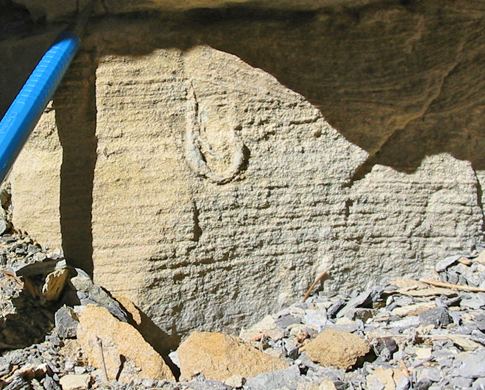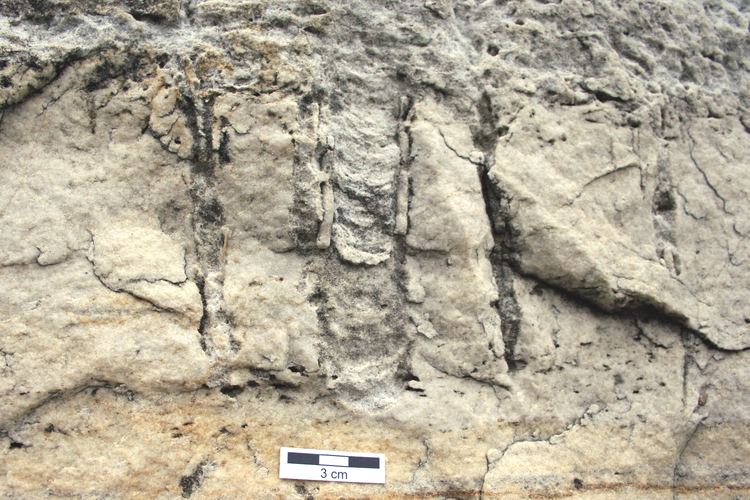Ichnogenus Diplocraterion | ||
 | ||
Similar Rhizocorallium, Teichichnus, Planolites, Thalassinoides, Cruziana | ||
Diplocraterion is an ichnogenus describing vertical U-shaped burrows having a spreite (weblike construction) between the two limbs of the U. The spreite of an individual Diplocraterion trace can be either protrusive (between the paired tubes) or retrusive (below the paired tubes). Some ichnospecies have both types (e.g., Diplocraterion yoyo). The presence/absence of funnel-shaped openings should not be used as an ichnotaxobase due the high probability that the upper portions of the trace may have been eroded away.

There are several ichnospecies of Diplocraterion.
Ethology

The various ichnospecies of Diplocraterion provide a good example of how Ethology (animal-substrate interactions and behavior) can be interpreted from trace fossils. Diplocraterion is a classic example of equilibrichnia (equilibrium traces). These types of traces represent gradual adjustments to background sedimentation and erosion rates and reflect the efforts of the organisms to maintain a specific depth within the substrate. This movement within the substrate produces the two types of spreite (protrusive and retrusive) characteristic of Diplocraterion and other ichnotaxa (e,g., Rhizocorallium).
Most Diplocraterion show only protrusive spreit (e.g., D. parallelum, D. polyupsilon, D. biclavatum). These indicate that the trace was produced under predominantly erosive conditions where the organism was constantly burrowing deeper into the substrate as sediment was eroded from the top. D. yoyo has both protrusive and retrusive spreiten indicating highly variable conditions (erosional and depositional) leading to the need for the organisms to constantly adjust itself up and down within the substrate to maintain equilibrium and not become exposed or buried.

